Audi – LeMan's Gladiator
In recent news, Audi is quitting the World Endurance Championship. Audi won 13 championships since their first race in 1998. This season is their last, and they’re moving to focus on racing in Formula-E, the electric cousin of Formula 1.
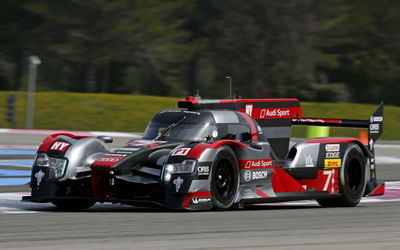
In recent news, Audi is quitting the World Endurance Championship. Audi won 13 championships since their first race in 1998. This season is their last, and they’re moving to focus on racing in Formula-E, the electric cousin of Formula 1. Since the beginning of their racing they battled Porsche, Toyota, Peugeot and many others – each season a greater challenge.
In the mid-1990s Le Mans was very popular among manufacturers – BMW, Mercedes, Porsche, Mazda; many carmakers had their racing team. Audi Sport’s manager at the time Wolfgang Ullrich realized the value of jumping into the competition. In 1998 Audi ordered a Dallara race car to race by Joest Racing, but later after change in regulation Audi acquired a new car made by RTN, both cars were under LeMans Prototype category. Meanwhile, Audi was deep in the development of its own prototype – Audi R8R, and in the 12 Hours of Sebring in 1999, it had its first race.
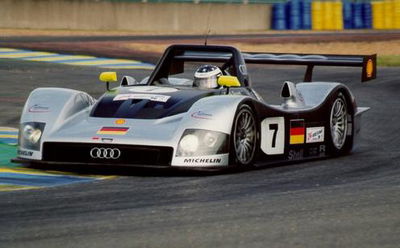
The R8R showed results by finishing third. Before competing in the famous Circuit de la Sarthe, a new car was made, which was a tweaked version of the R8R. The modifications that were made including closed cockpit, new parts and a new name – R8C, but the R8C lacked pace and had gearbox flaws. However, Audi had managed to be only 10 seconds off the pace of the leading LMP car. Joest’s R8Rs ran smooth but still weren’t fast enough to run for pole and Audi eventually finished 3rd and 4th in la Sarthe.
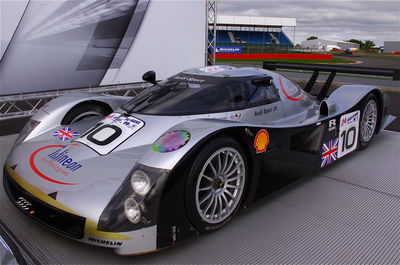
By the end of 1999 Mercedes retired from racing after the embarrassment of their car having a ‘mid-life crisis’ and becoming a plane (Alternative – Mistaking the race for an air show). Toyota and BMW began racing in Formula 1, Toyota stopped racing for WEC and BMW continued racing, though did not develop their car any further. Even though the competition wasn’t as tight, Audi was still forced to rethink their steps if they wanted to become the champions. So Audi began working on a new prototype with Joest and Dallara – the R8 Spyder. The new car featured a 3.6L v8 and a new fuel injection system. Audi had won the championship, winning almost every race of the season in 1999, leaving BMW far behind and eventually BMW retired from LeMans. Porsche too was out, as their prototype project was scrapped (rumored to be due to politics in the management of Porsche and VW)
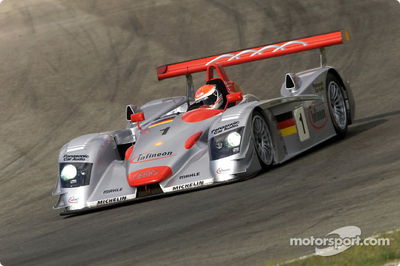
With most of the mighty competitors out, Audi had a near-granted victory at the next season in the year 2000. New regulations were introduced and the ‘LMP900’ regulations were announced. 900 in the name symbolized the minimum weight of the category. Audi won in the championships between 2000 and 2005, except 2003. (In 2003 Bentley won and back then Audi was owned by Bentley.) Back in 2001 though, a tragedy accrued when an ex-F1 driver Michele Alboreto died in a crash when a high speed tire failure resulted the driver to lose control and crash during a test session.
In 2005 competitors began to close on Audi and that drew the attention of the development team which saw the need for a new car. The development of the R10 TDI began, a prototype with a diesel powered V12. Because the car was only in development stages, in 2005, the R8 was still running but because of new regulations, the engine was downsized and power was restricted. Audi finished fifth at la Sarthe and Audi was shocked.
The R10 TDI was finally debuted, and raced for the first time in 2006 at Sebring. At la Sarthe, Audi was the first diesel car to win the 24 hours race and also nearly broke the record of 380 laps complete.
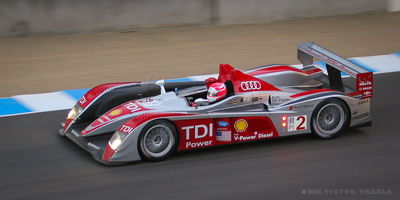
Yet again, regulations were changed and Audi’s dominance was doubted. In 2007 Audi finished 4th overall and the streak was over. However, Audi was still undefeatable in la Sarthe. Peugeot developed a faster car, which had out-qualified Audi. Eager to fight back and keep their streak on la Sarthe, Audi had a hard battle with Peugeot and Audi’s only hope were to have better strategy and luck. Audi’s strategy was simple: breathe down Peugeot’s necks and push hard on them until they will start having problems, as they assumed their cars were more reliable. And that’s exactly what happened – Peugeot had problem with some of their cars, but were still in the overall lead. Tides had turned when rain was coming, Audi anticipated rain and called their cars for tire change while Peugeot continued on going, and were slowed down. The 2007 season was one of the most intense seasons for Audi so far.
In 2008 Audi joined the full LeMans series for the first time, before that they were racing on just a few events on the calendar (Mainly la Sarthe and Sebring). At la Sarthe, Peugeot featured slightly upgraded car but still could not beat the mighty Audi team. Despite Peugeot leading on the points chart and winning at the Nurburgring, Peugeot had an accident and Audi was titled as the championship winners.
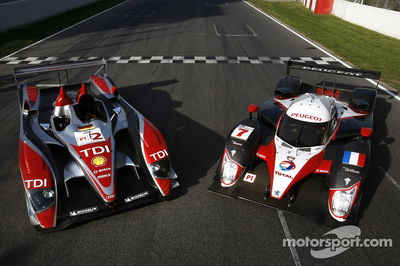
By 2009 Audi unveiled a new car, a 5.5L V10 and a new design, including state of the art LED lights. Audi got a perfect start winning the 12 Hours of Sebring. However, despite the new car the Peugeot took the two top spots in the 24 Hours of Le Mans. One of Audi’s cars had got out of the track and crashed and another car suffered from technical issues.
In 2010 Audi launched an updated version of the R15 TDI, called R15 TDI Plus. Despite regulations on diesel and boost, Audi matched the power output of the previous cars and also aerodynamics were re-designed and a lot of effort was put on reducing the drag of the car. The 24 Hours of Le Mans were, again, a tight battle between Audi and Peugeot. Peugeot got the pole position on the grid after better qualifying and Audi was struggling to keep up, but had a different race strategy. Peugeot pushed their cars to the limit, and all three of the cars had engine malfunctions, destroying the competition for Peugeot and forcing a retirement. All three Audis finished at the podium, breaking the distance driven record. At the next races though, Peugeot fought back and won all the races.
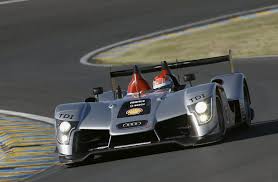
In 2011, Audi had replaced the R15 TDI with the R18. The engine was a turbodiesel 3.7L v6 which also had electric motors and KERS (kenetic . That year new regulations were announced including the rear stabilization fin. Also, wider tires were included, lower rear wing and other tweaks and changers. Unfortunately to Audi, they finished 3rd at their first race. Due to logistics issue, Audi did not race at the 12 Hours of Sebring with the R18, they used the R15 Plus instead – they finished 4th and 5th. At la Sarthe though, two of the three Audis were involved in a collision. Both drivers came with minimum injuries though the cars were totally destroyed. The remaining R18 finished and won.
The 2012 season Audi competed at the WEC; Audi had their tenth victory at Sebring and at the 6 Hours of Spa Francorchapms the e-tron Quattro and Ultra debuted, overall Audi had 4 cars and yet again Audi won. Since Peugeot left the WEC, Audi had finally been able to take it easy at la Sarthe and yet again they won – first, second, third and fifth.
Later in 2013 Audi had a relaxing season, not any serious competitors – they had 2 cars (3 in la Sarthe and Spa Francorchamps) they won most races first and second and overall dominated, had the overall victory. Audi did not have time to celebrate because meanwhile Porsche was planning a massive comeback and Toyota were planning to join, both were threatening Audi – All prepared for an enduring rivalry.
For 2014 Audi had upsized the engine for 4 litres instead of 3.7 and changed various other tweaks including the headlights. Porsche’s car is a 2 litre V4 and Toyota a 3.7 V8. Like the Audi, both were hybrid as well. Porsche, Toyota and Audi had tough races at the first season, and in la Sarthe, like always, Audi won. In that season Toyota had the overall victory.
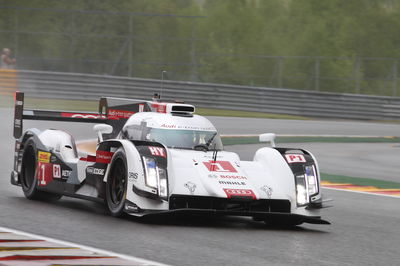
Audi came to the 2015 season with almost brand new car. Aerodynamics were significantly improved and the engine was tweaked to make more power whilst being more economical and plenty of other improvements were introduced. Same as the Audi, Porsche had almost completely new car but Toyota had the same car. Porsche had dominated that season winning 6 times first out of the 8 races. Audi had realized the competition is very tight– Both Toyota and Porsche are very strong competitors and even somewhat faster, but Audi was still dominating at la Sarthe.
This season, Audi’s last season, Porsche is still in the lead with only one race to go – The 6 Hours of Bahrain. So far Porsche’s first with quite a gap to Audi, and Toyota just behind Audi with a gap of just 15 points (Toyota can still defeat Audi, though it is unlikely).
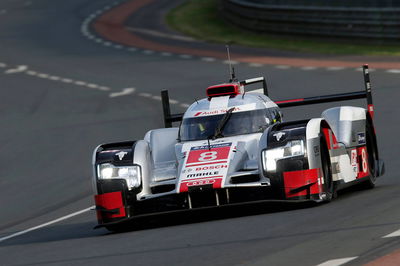
Overall, despite a shaky start, Audi had dominated LeMans (and especially la Sarthe). Audi had proven that you don’t need the fastest car to win – You need the minds to make the strategy strong enough. Since Audi joined the 24 Hours of LeMans Audi had the goal of winning. The competitive spirit is what I loved the most about Audi; they were there to do their best. Unfortunately, Audi is moving off to focus on Formula-E, leaving the competition for Porsche and Toyota. Audi made their mark in LeMans racing, setting very high standards for the future teams to look up to. Who knows, maybe someday, they’ll return…













Comments
Matt Robinson something wrong with entering the article with my laptop…
What’s the problem, chap?
Dylan Smit Ian Wright
Great piece.
One thing though, your first picture (the R8R) has a caption instead of a header.
claps slowly great. Great
Amazing read going to read it again tonight on my pc.
Great idea, maybe I will be writing on that for next time
Great blog!
I love LMP, but GT is were all the action is these days.
I’d agree, since Audi is leaving the battle is only between Toyota and Porsche. It changed a lot since its glory days in the 1990s.
Forsprung durch viel Euros. BTW … Porsche or Audi … they are the same company. Porsche is handling Le Mans and Audi is taking over Formula E. This is a clear ….
What an amazing text! Sad to see Audi go… Team Joest allegedly wants to continue racing with an Audi chassis in LMP2, without the Audi Sport hardware. I spotted a small mistake however: the title. It’s “Le Mans’ Gladiator” instead of Le Man’s Gladiator”. Really liked this and hope you do more.
I couldn’t help but notice that the part of the article that was explaining what KERS was (for all wondering, it stands for Kinetic Energy Recovery System) was broken. Other than that, It was a fantastic article about the history of Audi at the Circuit du la Sarthe!
Have noticed! Thanks!
Pagination